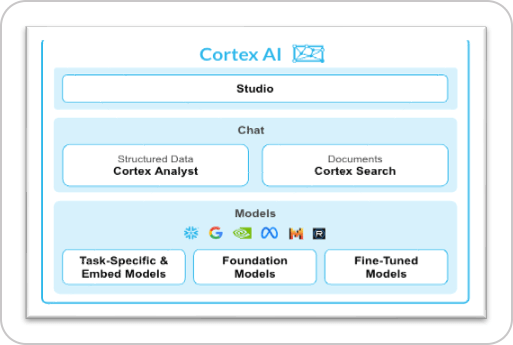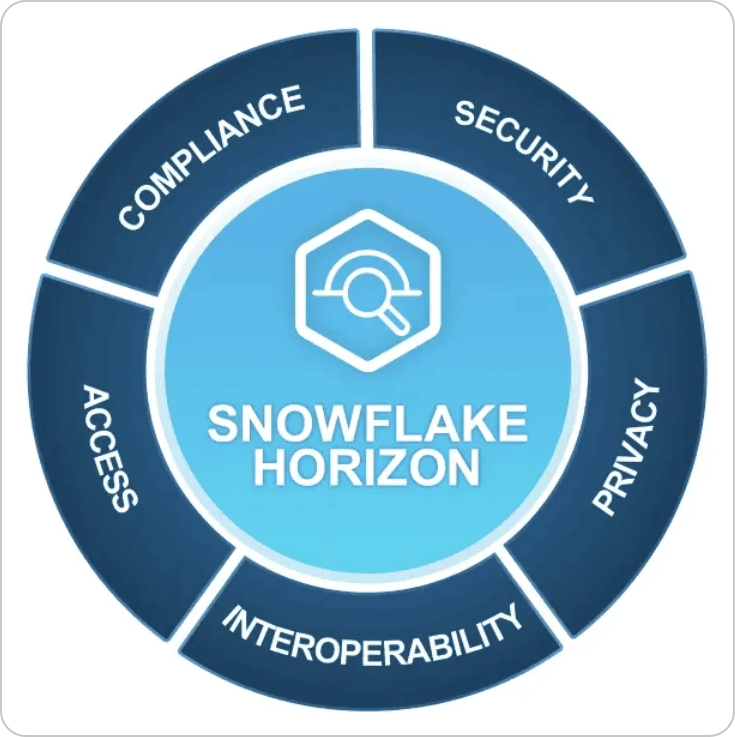Highlights from Snowflake Summit 2024
Innovations in Data Management at Snowflake Summit
Future Trends in Data Analytics
It’s been over two weeks since the Snowflake Summit 2024 in San Francisco and those of us in the data business are still processing all the innovations in Data, AI, and Cloud that the platform vendor unveiled at the gathering. Representing USEReady, a long-time Snowflake partner, I got to interact with some of the top minds in the industry and gain tons of insights on current data challenges and solutions that promise to revolutionize how businesses leverage data for AI, modernize data infrastructures and governance, and application development.

In this blog, I attempt to deep dive into Snowflake’s announcements and innovations that left me most impressed. Read on.
Democratizing AI with Snowflake Cortex
The Summit offered a glimpse (actually more!) of what a future of democratized AI within data platforms may look like. During its keynote, it showcased impressive features like Cortex Search (Private Preview), which allows users to create chatbots directly from their data. This seismic shift is likely to empower business users to interact with information in natural language, not needing to know complex queries or relying on data engineers.
Keynote Highlights: Future of Data
Innovations Unveiled at Snowflake Summit 2024
Strategic Insights from Industry Leaders
Trends Shaping Data Management and Analytics
Exploring New Features in Snowflake
Case Studies and Success Stories
Expert Panels and Discussions
Roadmap for Future Developments in Snowflake
But Snowflake’s vision extends far beyond just chatbot creation. The company unveiled a full suite of tools within Cortex AI that aim to empower users across diverse technical skillsets.
For instance, Cortex Analyst (Private Preview) allows business users to ask questions and gain insights from structured data using natural language. Similarly, Cortex Search leverages advanced search technology to quickly retrieve relevant information from vast document repositories.

For users who are more technically skilled, something called Cortex Fine-Tuning (Public Preview) offers a secure way to customize large language models for specific tasks while Document AI lets them extract information from diverse document formats. These advancements, along with features like AI & ML Studio for LLMs (Private Preview) and Cortex Guard (Public Preview), offered a window into a future where AI will become incredibly “accessible” to users of all stripes within an organization, paving the way for significant improvement in data exploration, decision-making, and team efficiency of enterprises.

Snowflake Horizon – Data Governance Minus Headaches
The topic of Data Governance is a daunting one, even for the most intrepid souls. It’s a complex theme riddled with questions (and headaches!). Snowflake Horizon aims to take the stress out of the equation by automating many of the data governance tasks that have long given it a bad reputation. Snowflake Horizon’s built-in lineage tracking (Private Preview) will be a game-changer for understanding how data flows through our systems, while data quality monitoring (Private Preview) will help us maintain the integrity of our datasets. Personally, I think that the internal marketplace (Private Preview) concept is brilliant! No more hunting for obscure datasets across different teams – everything will be neatly categorized and easily available for collaboration. This is sure to foster a culture of openness and self-service data access, leading again to faster decision-making and improved business outcomes.
Streamlining End to End Development
At the summit, Snowflake reiterated its commitment to making data development faster and more efficient and that for obvious reasons resonated with us at USEReady. The introduction of Snowflake Notebook (Public Preview) is a welcome addition. Data scientists can now seamlessly combine Python, SQL, and Markdown in a single workspace, eliminating the need to switch between different tools.
Beyond Snowflake Notebook, the improved Snowflake CLI and Python APIs (Generally Available) will further simplify the data pipeline development process. These enhancements offer better functionality, enhanced performance, and seamless integration with existing tools, allowing data teams to leverage their current skillsets while exploring newer possibilities. And last but not the least, Serverless Tasks (Private Preview) for Python promise to simplify orchestration with Snowflake managed compute for Snowpark, freeing teams from infrastructure headaches.
Snowflake rolled out several new features to enhance data management and processing. Iceberg tables and Polaris Catalog (Generally Available) together improve data storage and accessibility across different data architectures and engines. Dynamic tables (Generally Available) streamline data pipeline creation. Hybrid tables (Public Preview) offer a combination of transactional capabilities and advanced functionalities through Snowpark. Additionally, Snowpark for Python with Pandas API (Generally Available) empowers data scientists with familiar tools for scalable workflows. Finally, Snowflake Copilot (Public Preview), an AI-powered assistant, accelerates coding and data analysis within the Snowflake environment.
A Thriving App Ecosystem
Snowflake made some major strides towards evolving beyond its “data platform’ image and transforming into a hub for building and deploying a wide range of applications. The ability to leverage containers and APIs opens up a world of possibilities. For instance, containerized workloads (Generally Available) will allow developers to build efficient AI applications with low latency processing. Furthermore, the introduction of containerized Native Applications (Public Preview) expands the types of applications that can be built on Snowflake, allowing for diverse applications to leverage GPUs and advanced UIs. Lastly, Snowflake Native App Framework’s application distribution allows deployment across major clouds, enhancing operational efficiency and monetization options.
Unified DevOps Approach
It’s no secret that data development can sometimes get bogged down by siloed workflows. At the Summit this year, Snowflake unveiled an integrated approach to accelerate development lifecycles and improve overall productivity for data teams. This unified approach integrates Git version control, Python APIs, declarative object management and seamless CI/CD automation. All these features are available in Public Preview.
Snowflake’s integration of Git version control and CI/CD automation is a breath of fresh air. This unified approach will streamline development lifecycles and boost productivity for our data teams. Snowflake’s GIT Integration provides an easy way to integrate and manage application code within Snowflake, supporting collaborative development workflows while Declarative Database Change Management or DCM allows to declaratively manage changes across supported snowflake objects directly from git Repository. These features will empower our data teams to work more efficiently, iterate faster, and deliver impactful data solutions at an accelerated pace.
For these reasons and more the Snowflake Summit 2024 was a truly inspiring experience for me. The convergence of powerful AI tools, robust governance capabilities, and a developer-centric approach signifies a significant leap forward in data utilization. At USEReady, we can’t wait to see how these innovations transform the way we work with data and drive tangible business results!











 Media Coverage
Media Coverage Press Release
Press Release
